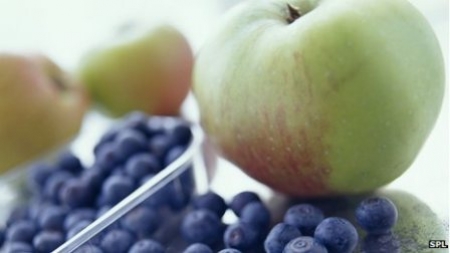Eating more fruit, particularly blueberries, apples and grapes, is linked to a reduced risk of developing type-2 diabetes, suggests a study in the British Medical Journal.
Blueberries cut the risk by 26% compared with 2% for three servings of any whole fruit - but fruit juice did not appear to have the same effect.
The research looked at the diets of more than 187,000 people in the US.
But Diabetes UK said the results of the study should be treated with caution.
Researchers from the UK, US and Singapore used data from three large studies of nurses and health professionals in the US to examine the link between fruit consumption and the risk of contracting type-2 diabetes.
Diabetes is an incurable condition in which the body cannot control blood sugar levels, because of problems with the hormone insulin.
In type-2 diabetes, either the pancreas cells do not make enough insulin, or the body's cells do not react properly to it. This is known as insulin resistance.
In these studies, 6.5% of participants (12,198 out of 187,382) developed type-2 diabetes.
The studies used food frequency questionnaires to follow up the participants every four years, asking how often, on average, they ate a standard portion of each fruit.
The fruits used in the study were grapes or raisins, peaches, plums or apricots, prunes, bananas, cantaloupe, apples or pears, oranges, grapefruit, strawberries and blueberries.
The researchers' analysis of the data showed that three servings per week of blueberries, grapes and raisins, and apples and pears significantly reduced the risk of type-2 diabetes.
While all fruit was shown to reduce the risk, these fruits appeared to be particularly effective.
The researchers said this could be due to the fact these fruits contain high levels of anthocyanins, which have been shown to enhance glucose uptake in mice. The same fruits contain naturally-occurring polyphenols which are known to have beneficial effects.

